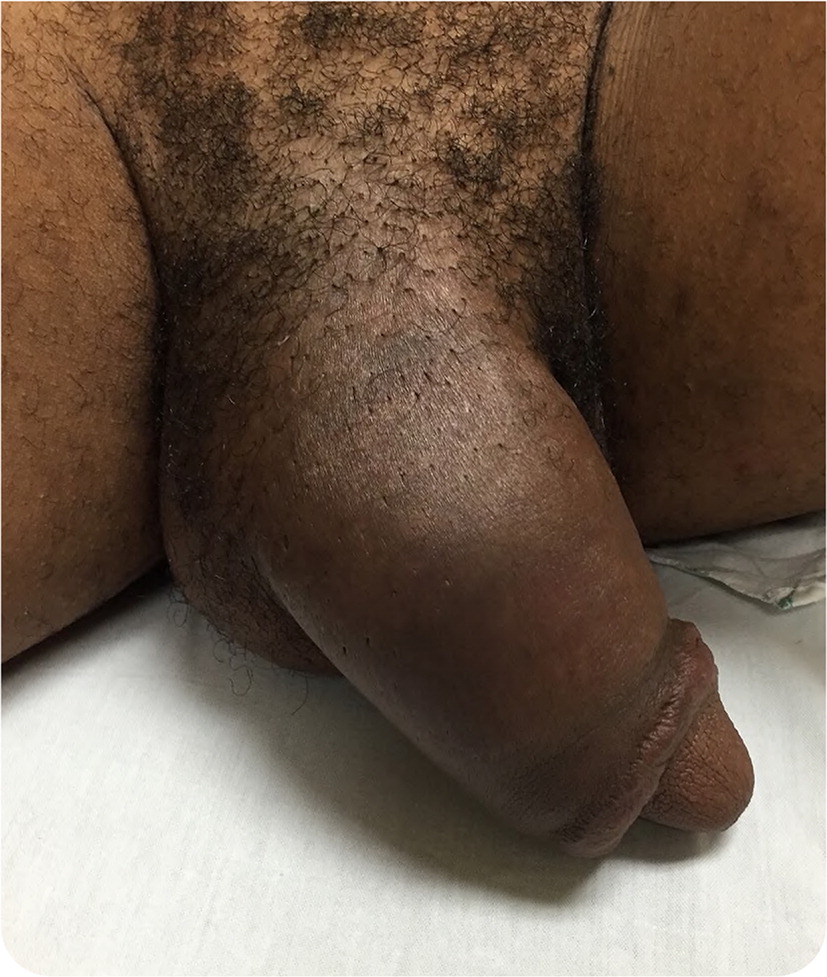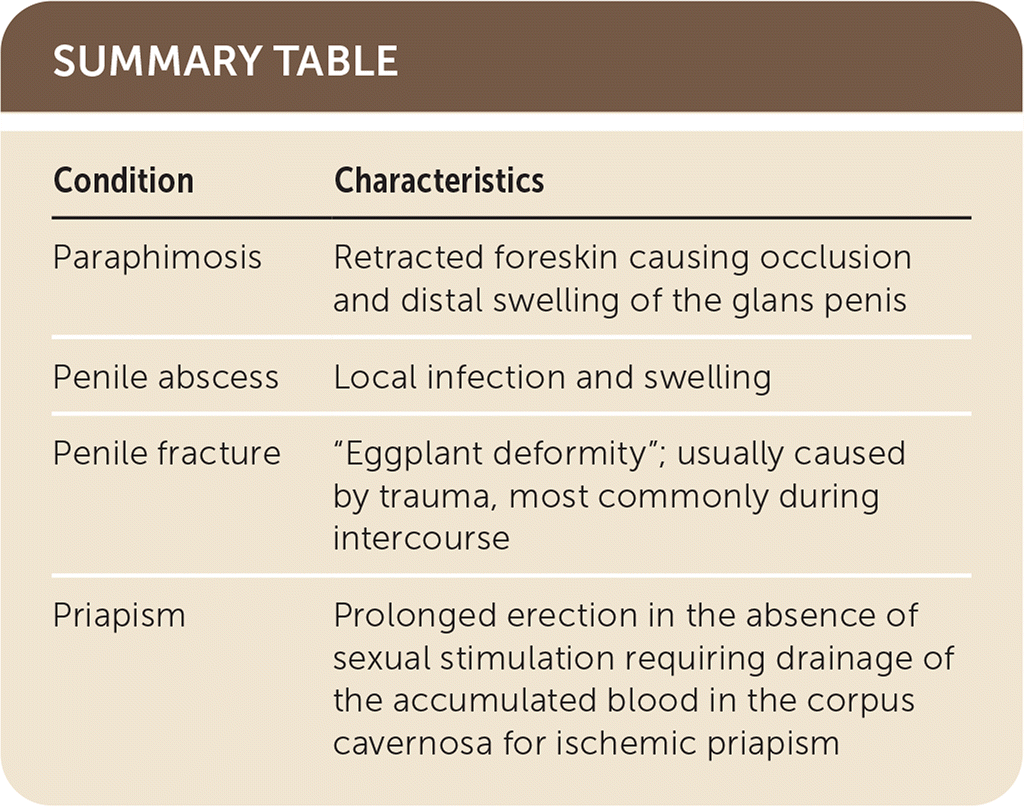
Am Fam Physician. 2020;102(12):751-752
Author disclosure: No relevant financial affiliations.
A 34-year-old patient presented with penile pain and swelling that had been present for several hours following insertive anal intercourse. The patient had no history of pain associated with erection or intercourse before the onset of swelling.
On physical examination, his vital signs were normal, and he appeared well. Swelling and ecchymosis were present along the dorsal shaft of the penis (Figure 1). The patient was able to void spontaneously, and there was no hematuria.

Question
Based on the patient's history and physical examination findings, which one of the following is the most appropriate next step?
A. Bedside incision and drainage of the area.
B. Corporal aspiration with subsequent irrigation using phenylephrine.
C. Ice application and supportive management of the affected area, with outpatient follow-up.
D. Immediate urologic evaluation.
E. Manual compression to reduce the foreskin distally over the glans penis.
Discussion
The answer is D: immediate urologic evaluation. Acute penile fracture may present in a dramatic way. The most common mode of injury is sexual intercourse, but it can also be caused by masturbation or rolling over in bed.1 The injury involves acute tear or rupture of the tunica albuginea of the corpus cavernosum. This patient has the classic physical examination finding of penile fracture, which is described as an “eggplant deformity” and results from hematoma in the penile shaft and associated discoloration of penile skin.2
Imaging is typically reserved for when there is diagnostic uncertainty.2 Management of penile fracture involves operative repair of the damaged tunica albuginea.3 Immediate operative repair is generally recommended over delayed treatment.4 Long-term complications may include erectile dysfunction, penile deformity, or voiding symptoms.5
Following urologic evaluation, the patient was taken to the operating room for urgent repair of an acute right-sided penile fracture. Intraoperative retrograde urethrography was performed to rule out concomitant urethral injury.
Other important diagnoses to consider include paraphimosis, penile abscess, and priapism, which have varying etiologies and management options.
Paraphimosis occurs in uncircumcised patients when the foreskin is retracted and cannot be returned over the tip of the penis, causing distal swelling. Immediate attention is required to decrease edema and restore the foreskin to its normal position.6
Penile abscesses are uncommon but typically present as localized swelling. They are often associated with penile infections and require incision and drainage under the direction of a urologist or surgeon.
Priapism is a prolonged erection in the absence of sexual stimulation with persistent engorgement of the corpus cavernosa. It typically requires drainage of accumulated blood and irrigation, which can be facilitated using local phenylephrine.7

| Condition | Characteristics |
|---|---|
| Paraphimosis | Retracted foreskin causing occlusion and distal swelling of the glans penis |
| Penile abscess | Local infection and swelling |
| Penile fracture | “Eggplant deformity”; usually caused by trauma, most commonly during intercourse |
| Priapism | Prolonged erection in the absence of sexual stimulation requiring drainage of the accumulated blood in the corpus cavernosa for ischemic priapism |
